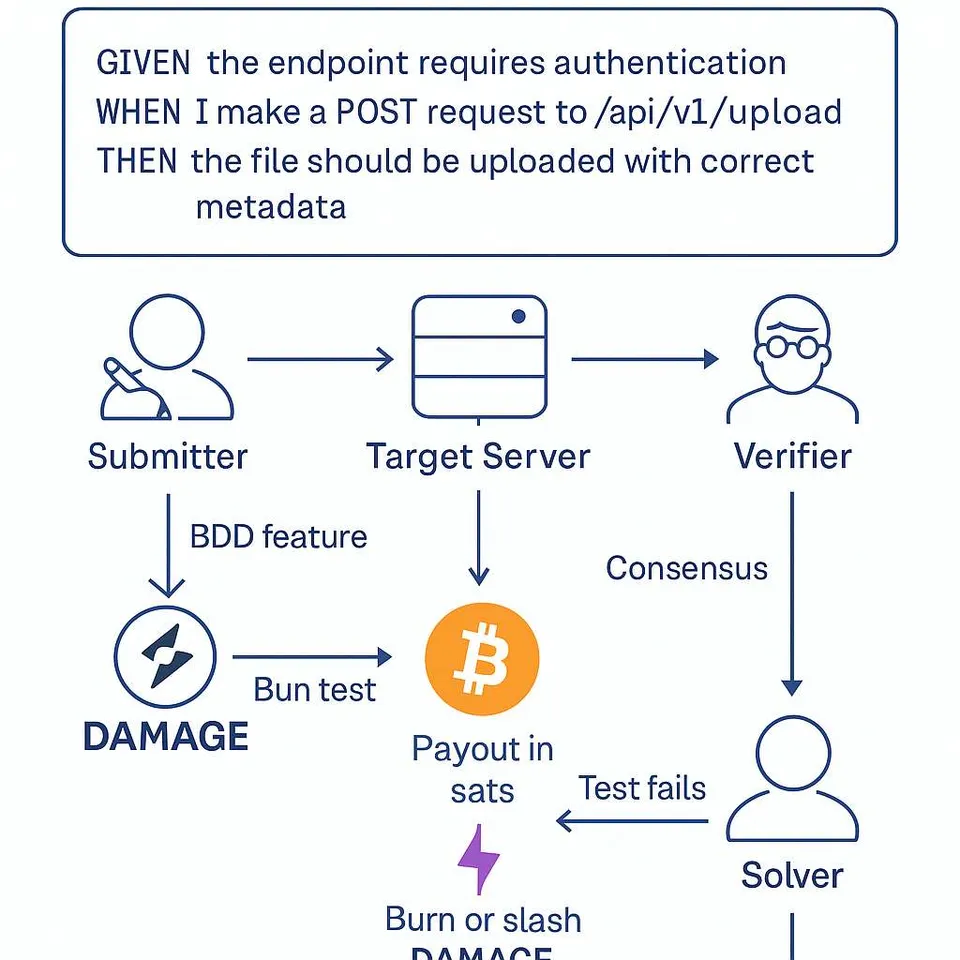
Here's a practical use case that shows how a BDD test on DamageBDD can:
✅ Payout in sats
💸 Cost DAMAGE to execute
⚖️ Achieve consensus through verifiable behavior
---
🧪 Use Case: "Verify Bug Bounty Fix for API Security Flaw"
📋 Scenario
A company posts a bounty:
> “Fix this bug: POST /api/v1/upload allows unauthorized file overwrite.”
They publish a BDD test on DamageBDD that proves:
Upload is now authenticated
Files cannot be overwritten by unauthorized users
Logs must reflect the event with correct metadata
---
👷♂️ Who’s involved?
Role Description
Submitter Writes the BDD feature (upload_file.feature) showing the desired behavior
Solver Fixes the bug, runs the test successfully against staging
Verifier Runs the same test in their environment and reaches the same result
---
⚙️ Mechanics
1. Submitter uploads the BDD spec to DamageBDD.
2. Solver stakes some DAMAGE to run their test against the target server.
3. If the test passes:
The result is hashed and stored (optionally anchored to a chain).
A payout of sats is triggered from the bounty pool via Lightning invoice.
4. Verifiers (optionally) reproduce the result.
If n-out-of-m verifiers confirm, consensus is achieved.
5. If the result was invalid (test fails on verifier node), the staked DAMAGE is burned or slashed.
---
💥 Why DAMAGE?
It’s the cost to execute + signal commitment (like gas).
Prevents spam or low-effort submissions.
Creates a market for trust — those with reputation will stake and verify more confidently.
---
⚡ Why pay in sats?
Because:
Sats are final, scarce, uncensorable
Sats are real money
You want your bounty hunter to walk away with value — not some vaporware token
---
🧠 Summary
> BDD = the contract
DAMAGE = the execution + consensus layer
Sats = the settlement unit
This combo lets orgs define behavior, decentralize verification, and settle truth in bitcoin.
No legal contract, no HR bullshit, just pure work = pure sats.
---
